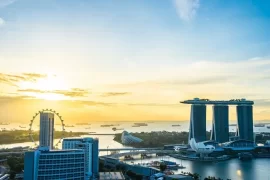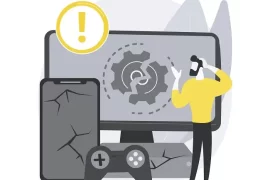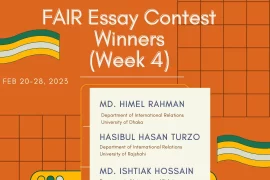
The global economy is constantly evolving, with new players emerging and existing players expanding their reach. The strength of an economy is crucial in determining its ability to generate wealth, provide a high standard of living for its citizens, and contribute to the global marketplace. In this article, we will examine the top 10 strongest economies in the world: the US, China, Japan, Germany, India, the UK, France, Canada, Russia and Brazil. These economies are highly diversified, each with its own unique strengths and challenges. We will explore what makes these economies strong and how they contribute to the global marketplace.
Ranking Criteria
The strength of an economy is measured by its gross domestic product (GDP), which is the total value of goods and services produced within a country’s borders in a given year. A strong economy is one that is capable of generating wealth and providing its citizens with a high standard of living. We are following IMF’s (International Monetary Fund) 2023 data for this ranking.
List of The Top 10 Strongest Economies in The World
United States of America (USA), the strongest economy in the world
The USA has the largest economy in the world, with a GDP of $26.19 trillion (IMF) in 2023. It is also the most powerful country in the world.
The US dollar is the world’s primary reserve currency, meaning that it is the currency held in significant quantities by governments and institutions around the world as a means of maintaining their financial reserves. The role of the US dollar as the global reserve currency has played a significant role in making the United States one of the strongest economies in the world, by facilitating economic growth, providing international influence, enabling trade and export, and supporting military dominance.
The US is also home to many large and influential corporations, including some of the world’s most valuable technology companies. These corporations have played a major role in driving innovation and growth, and have helped to make the US a hub for technological advancement and entrepreneurship.
Thirdly, the US has a highly skilled workforce, with a large percentage of the population having completed higher education. This has enabled the country to maintain a strong position in areas such as science, engineering, and finance.
Fourthly, the US has a well-developed infrastructure, including a modern transportation network, a highly developed telecommunications system, and an advanced energy sector. This has facilitated the growth of many industries and helped to attract foreign investment.
Fifthly, the US has a stable political system and a well-established legal framework, which has helped to create a business-friendly environment. This has encouraged entrepreneurship and investment and has contributed to the growth of many industries.
Finally, the US has a large consumer market, with a high standard of living and strong purchasing power. This has enabled many businesses to flourish and has attracted foreign companies to invest in the country.
China
China is the world’s second-largest economy, with a GDP of $19.24 trillion (IMF) in 2023.
China’s massive population of over 1.4 billion people has provided a large domestic market for its industries. This has enabled Chinese companies to grow rapidly and achieve economies of scale, allowing them to compete effectively in international markets.
Secondly, China has pursued a policy of economic reform and liberalization, opening up its economy to foreign investment and trade. This has attracted significant amounts of foreign capital, technology, and expertise, helping to fuel China’s economic growth.
Thirdly, China has invested heavily in infrastructure, including transportation, energy, and telecommunications. This has facilitated the growth of many industries and helped to attract foreign investment.
Fourthly, China has a large and well-educated workforce, with a focus on science, technology, engineering, and mathematics (STEM) education. This has enabled China to develop a strong base of skilled workers, particularly in the technology sector.
Fifthly, China has focused on developing high-tech industries such as artificial intelligence, biotechnology, and advanced manufacturing. This has helped to move China up the value chain, allowing it to produce higher-value products and services.
Sixthly, China has a significant presence in international trade, particularly in Asia. This has enabled it to develop strong economic ties with other countries and to diversify its markets.
Finally, China has a strong government-led approach to economic development, with policies focused on supporting key industries, developing strategic industries, and investing in research and development. This has helped to promote innovation and entrepreneurship, and has contributed to China’s economic growth.
Current situation
China’s is currently recovering from the strictest lockdown. They country’s industrial production rose by 5.36% in April, 2023, year on year. Its retail spending has also increased by 18.4 %.

Japan
Japan is the third most powerful economy in the world, with a GDP of $ 4.37 trillion (IMF) in 2023. It has a highly skilled and well-educated workforce. The country places a strong emphasis on education and training, particularly in the fields of science, engineering, and technology. This has enabled Japan to maintain its position as a global leader in innovation and technology.
Secondly, Japan has a well-developed infrastructure, including an advanced transportation system and cutting-edge telecommunications network. This has facilitated the growth of many industries and helped to attract foreign investment.
Thirdly, Japan has a strong tradition of manufacturing excellence, with a focus on high-quality and precision engineering. This has enabled Japanese companies to dominate many industries, particularly in areas such as automobiles, electronics, and robotics.
Fourthly, Japan has a long history of investment in research and development, which has led to the creation of many new industries and products. This has helped to keep Japan at the forefront of technological innovation and competitiveness.
Fifthly, Japan has a strong culture of entrepreneurship and innovation, with many small and medium-sized enterprises playing a vital role in the economy. This has enabled the country to remain agile and responsive to changing market conditions.
Finally, Japan has a strong and stable political system, with a well-established legal framework and a supportive government. This has created a business-friendly environment that has encouraged entrepreneurship and investment and has contributed to the growth of many industries.
Current situation
As of May 2023, Japan’s economy grew by 0.4% in the first quarter. Besides picking up domestic demand, the country has benefitted from the recovery of tourism. It has outpaced America’s GDP growth.
Germany
Germany is the world’s fourth-strongest economy, with a GDP of $4.12 trillion (IMF) in 2023. It has a highly skilled workforce, with a strong focus on vocational training and apprenticeships. This has enabled German companies to develop a reputation for precision engineering and high-quality manufacturing, particularly in the automotive, engineering, and machinery sectors.
Secondly, Germany has a well-developed infrastructure, including a modern transportation system and a world-class telecommunications network. This has facilitated the growth of many industries and helped to attract foreign investment.
Thirdly, Germany has a strong tradition of innovation, with a particular emphasis on research and development. This has led to the creation of many new industries and products, particularly in the areas of renewable energy, biotechnology, and information technology.
Fourthly, Germany has a robust export-oriented economy, with a focus on high-value products and services. This has enabled German companies to tap into global markets and benefit from economies of scale.
Fifthly, Germany has a stable and supportive political and legal framework, which has created a business-friendly environment. This has encouraged entrepreneurship and investment, particularly in the technology and start-up sectors.
Finally, Germany has a strong social welfare system, which supports its citizens and contributes to social stability. This has helped to foster a skilled and healthy workforce and has contributed to Germany’s economic growth and stability.
India
India is the fifth largest economy in the world, with a GDP of $3. 82 trillion (IMF) in 2023. It has a large and rapidly growing population, which provides a vast domestic market for its industries. This has helped to fuel the growth of many sectors, including technology, manufacturing, and services.
Secondly, India has a highly skilled workforce, with a focus on science, technology, engineering, and mathematics (STEM) education. This has enabled India to become a global leader in information technology and software development.
Thirdly, India has a well-developed financial sector, with a growing number of banks, insurance companies, and other financial institutions. This has enabled Indian companies to access capital and investment, and has facilitated the growth of many industries.
Fourthly, India has a strong tradition of entrepreneurship and innovation, with a growing number of start-ups and small businesses. This has enabled India to remain agile and responsive to changing market conditions.
Fifthly, India has made significant investments in infrastructure, including transportation, energy, and telecommunications. This has facilitated the growth of many industries and helped to attract foreign investment.
Sixthly, India has implemented several economic reforms in recent years, aimed at improving the ease of doing business, increasing foreign investment, and reducing bureaucracy. These reforms have helped to create a more business-friendly environment, and have contributed to India’s economic growth.
Finally, India has a strong and stable political system, with a well-established legal framework and a supportive government. This has created a business-friendly environment that has encouraged entrepreneurship and investment, and has contributed to the growth of many industries.
United Kingdom (UK)
The UK is the sixth-largest economy in the world, with a GDP of $3.48 trillion (IMF) in 2023. It has a highly skilled and educated workforce, with a focus on science, technology, engineering, and mathematics (STEM) education. This has enabled the UK to become a leader in several high-tech industries, including financial services, pharmaceuticals, and information technology.
Secondly, the UK has a well-developed financial sector, with a strong emphasis on innovation and global reach. This has made the UK a hub for financial services, attracting significant investment from around the world.
Thirdly, the UK has a large and diverse economy, with a mix of traditional industries and emerging sectors. This has provided the UK with resilience against economic shocks and enabled it to adapt to changing global conditions.
Fourthly, the UK has a highly developed infrastructure, including transportation, energy, and telecommunications. This has facilitated the growth of many industries and helped to attract foreign investment.
Fifthly, the UK has a stable and transparent legal system, with a supportive government and strong institutions. This has created a business-friendly environment that has encouraged entrepreneurship and investment, and has contributed to the growth of many industries.
Sixthly, the UK has a long history of international trade and investment, with a network of trading partners and diplomatic relationships. This has enabled the UK to remain competitive in the global economy and maintain a strong position as a trading nation.
Finally, the UK has a culture of innovation and creativity, with a focus on research and development. This has helped to drive new industries and products, and maintain the UK’s position as a leader in several key sectors.
Current situation
The Bank of England forecasts that the UK’s economy will experience stagnation rather than recession in the first half of 2023. Thanks to a construction boom, the country’s economy managed to achieve a modest 0.1% increase in GDP during the first quarter compared to the previous three months of 2022.
France
France is the world’s seventh-strongest economy, with a GDP of $2.81 trillion (IMF) in 2023. It has a highly skilled and educated workforce, which is a major asset for the country’s economy. The country has a strong tradition of education, and its universities are ranked among the best in the world.
Secondly, France has a large and diverse economy, with tourism, manufacturing, and pharmaceuticals in the leading position. This has provided France with resilience against economic shocks and enabled it to adapt to changing global conditions.
Thirdly, France has a well-developed infrastructure, including transportation, energy, and telecommunications. This has facilitated the growth of many industries and helped to attract foreign investment. The government has a strong presence in these sectors.
Fourthly, France has a strong agricultural sector, producing a variety of high-quality products such as wine, cheese, and other luxury goods. This has made France a leading exporter of agricultural products, contributing to its economic strength.
Fifthly, France has a stable and transparent legal system, with a supportive government and strong institutions. This has created a business-friendly environment that has encouraged entrepreneurship and investment and has contributed to the growth of many industries. It is the 57th freest economy in the world, according to the 2023 Index of Economic Freedom.
Sixthly, France is strategically located in the heart of Europe, which gives it easy access to markets across the continent. This location has helped to attract foreign investment and make France a hub for international trade.
Finally, France has a culture of innovation and creativity, with a focus on research and development. This has helped to drive new industries and products, and maintain France’s position as a leader in several key sectors.
Canada
Canada is the 8th-strongest economy in the world, with a GDP of $2.33 trillion (IMF) in 2023. It has a highly educated and skilled workforce, with a focus on science, technology, engineering, and mathematics (STEM) education. This has enabled Canada to become a leader in several high-tech industries, including aerospace, biotechnology, and telecommunications.
Secondly, Canada has a large and diverse economy, with a mix of traditional industries and emerging sectors. This has provided Canada with resilience against economic shocks and enabled it to adapt to changing global conditions.
Thirdly, Canada has abundant natural resources, including oil, natural gas, minerals, and timber, which has provided a strong foundation for many industries and enabled it to become a leading exporter of these resources.
Fourthly, Canada has a stable and transparent legal system, with a supportive government and strong institutions. This has created a business-friendly environment that has encouraged entrepreneurship and investment, and has contributed to the growth of many industries.
Fifthly, Canada has a well-developed infrastructure, including transportation, energy, and telecommunications. This has facilitated the growth of many industries and helped to attract foreign investment.
Sixthly, Canada has a long history of international trade and investment, with a network of trading partners and diplomatic relationships. This has enabled Canada to remain competitive in the global economy and maintain a strong position as a trading nation.
Finally, Canada has a culture of innovation and creativity, with a focus on research and development. This has helped to drive new industries and products, and maintain Canada’s position as a leader in several key sectors.
Russia, the ninth-strongest economy in the world
Russia is the world’s ninth-strongest economy, with a GDP of $2.14 trillion (IMF) in 2023. The biggest country in the world is known for its abundant natural resources, including oil, gas, and minerals. The natural resource base has enabled Russia to become a leading exporter of natural resources, and has provided a strong foundation for its economy.
Secondly, Russia has a well-developed industrial sector, particularly in the areas of defense, energy, and manufacturing. This has enabled Russia to develop a strong domestic industry and export many high-value products.
Thirdly, Russia has a highly educated and skilled workforce, particularly in science, engineering, and technology. This has enabled Russia to maintain its position as a global leader in several high-tech industries.
Fourthly, Russia has a well-established and modern infrastructure, including transportation, energy, and telecommunications. This has facilitated the growth of many industries and helped to attract foreign investment.
Fifthly, Russia has made significant investments in science, research and development, which has led to the creation of many new industries and products. This has helped to keep Russia at the forefront of technological innovation and competitiveness.
Finally, Russia has a strong and stable political system, with a well-established legal framework and a supportive government. This has created a business-friendly environment that has encouraged entrepreneurship and investment, and has contributed to the growth of many industries.
Although the US and its allies have imposed multiple sanctions against Russia, the country has survived the economic clampdown and has been doing quite well.
Brazil
Brazil is the 10th strongest economy in the world, with a GDP of $2.06 trillion in 2023. It is the largest economy in Latin America and has emerged as a regional leader. This has helped Brazil increase its influence in the global economy and attract investment from other countries.
Brazil is rich in natural resources, such as minerals, oil, and agricultural land. These resources have helped Brazil become a major exporter of commodities.
Thirdly, Brazil has a population of over 216 million people, making it one of the largest domestic markets in the world. This has attracted many businesses to invest in Brazil, as they can tap into this large consumer base.
Fourthly, Brazil has a diversified economy with a range of industries, including manufacturing, services, and agriculture. This diversity has helped Brazil weather economic downturns in specific sectors.
Brazil has implemented several economic reforms over the past few decades, including inflation targeting, fiscal responsibility laws, and privatization of state-owned companies. These reforms have helped stabilize the economy and attract foreign investment.
Summary of Top 10 Strongest Economies in The World
In conclusion, the top 10 strongest economies in the world are highly diversified and each has its own unique strengths. The United States remains the world’s largest economy, but China is quickly catching up and could soon overtake the US. Japan, Germany, and India round out the top five, followed by the United Kingdom, France, Canada, Russia, and Brazil. These countries will continue to be major players in the global economy, driving innovation, growth, and prosperity for their citizens and beyond.








